Beer’s a science and a tasty one at that. You can even study for a master’s degree in beer brewing at several universities across the Czech Republic, the cradle of modern lagers. No wonder beer wasn’t left out at yesterday’s Researchers’ Night. With several options available, I chose the most appealing one by far – the National Museum of Agriculture, which offers an exhibition on beer brewing at its branch in Znojmo. You might recall that I took you there two years ago. This time, the museum presented a world-unique sample of an ancient brew in Prague headquarters. Sluneční bárka is inspired by a 3,000-year-old beverage believed to be a precursor to modern beer. Technically, it’s not beer, as it lacks hops entirely.

Still, our ancestors brewed this proto-beer using millet malt and wild yeast. The only variation from the original recipe was using a contemporary strain of yeast, as the brewmaster at Bohdaneč Brewery opted for top fermentation, replacing the spontaneous fermentation process you might know from Lambic beers. To spice up the brew, our Bronze Age ancestors added various herbs, which biochemists have identified in a residue found in a recently excavated bronze jar. The most intriguing ingredient is wormwood, from which thujone can be derived. Does thujone sound familiar? It should! It is the psychoactive compound in absinthe, linked to the visions and hallucinations evoked by "The Green Fairy," as the infamous liqueur was nicknamed by French artists. However, neither modern absinthe nor this brew contains enough thujone to cause such effects – you’d have to drink an impossible amount to feel anything, alcohol poisoning yourself long before you'd feel anything.
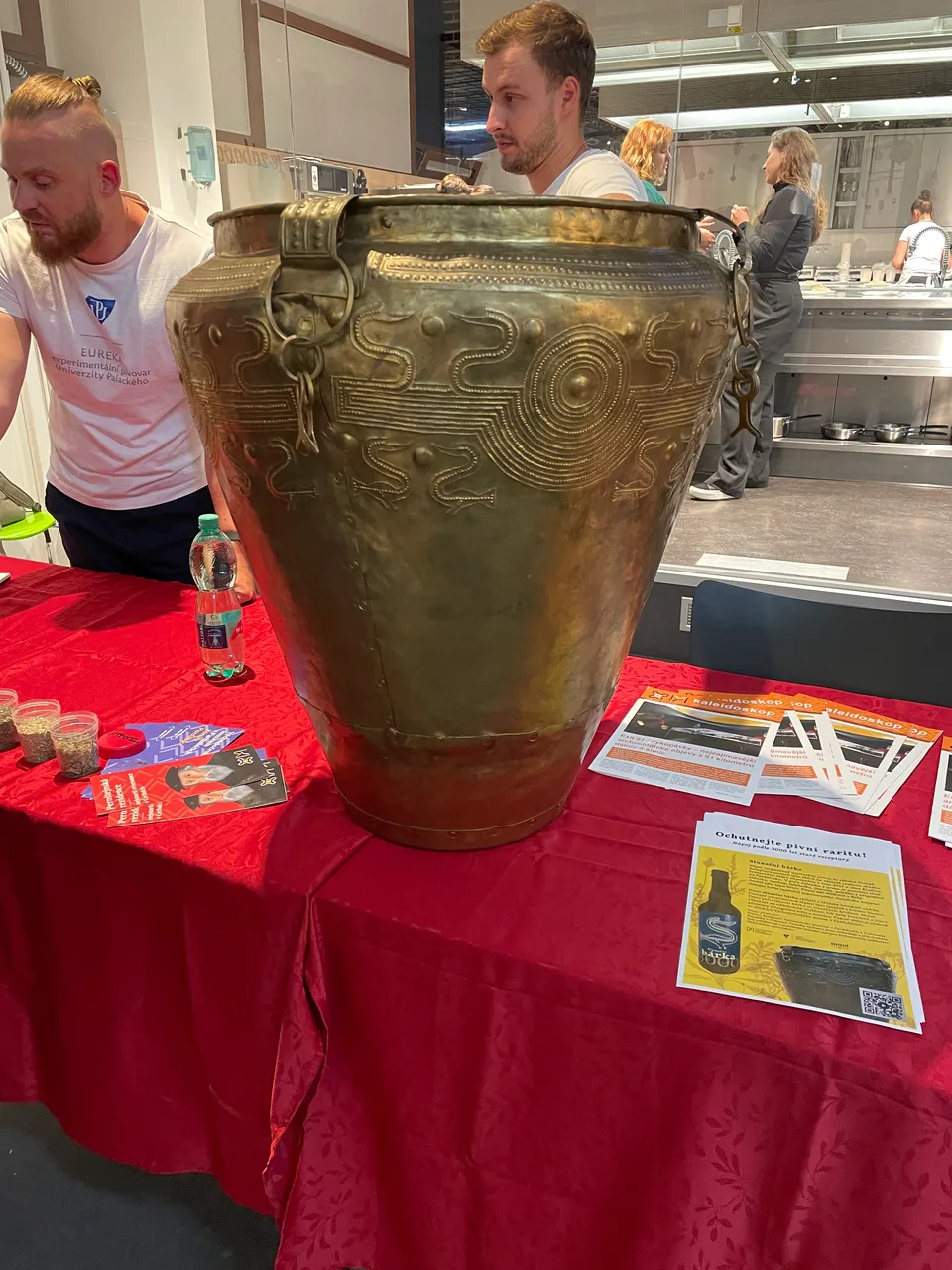
A replica of the bronze jar that revealed the recipe.
So, how does Sluneční bárka taste? I have to admit, it’s strange. The flavors are unfamiliar, with the herbs dominating the profile. The millet malt didn’t stand out much, not that I’ve tasted any millet beer before, but the herbs left no room for anything else. Sluneční bárka has the high acidity of a sour ale, with hints of plum perhaps, and a sharp herbal bitterness, with fleawort and wormwood being particularly prominent – though that might just be because I could identify their flavors. While it’s a piece of history, I’m glad brewing has advanced over the millennia. This felt more like a cough syrup than something I’d want to drink by the pint.
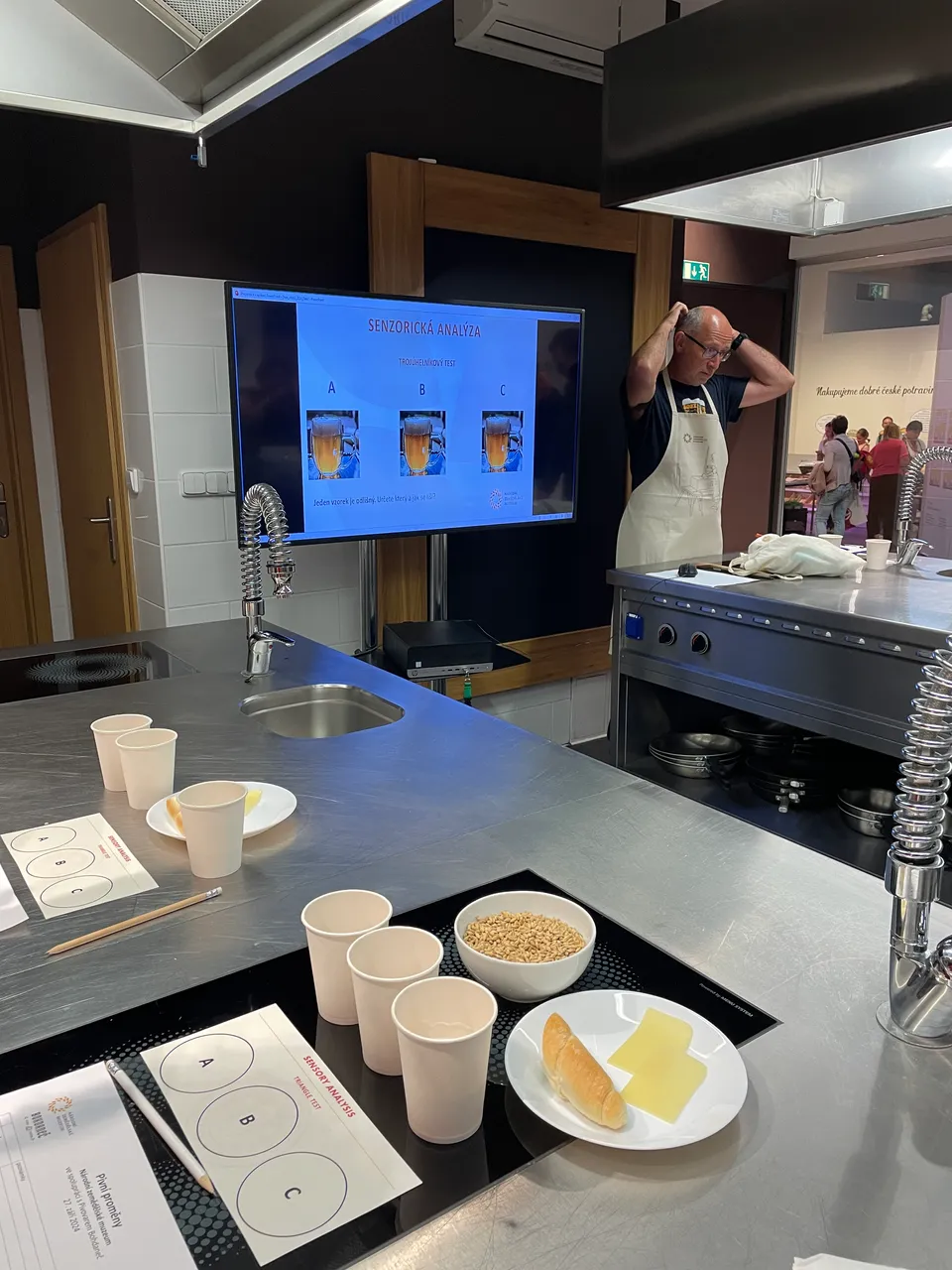
Beer Sensory Analysis
Visiting the museum to sample one brew, however unique it may be, would have been too straightforward. So, I also enrolled in a beer sensory course. This one focused on beer flaws, using industrial brews available in Czech supermarkets as examples. It reinforced my long-held belief: if you want great beer, go to the source – the microbrewery where it’s made. If they know how to brew it, they sure know how to store and serve it. Fortunately, microbreweries have been booming all over the globe.
Before I take you to the sampling, you might wonder about the bread roll and cheese. They are meant to cleanse your palate between samples, helping reset your sense of taste and smell.
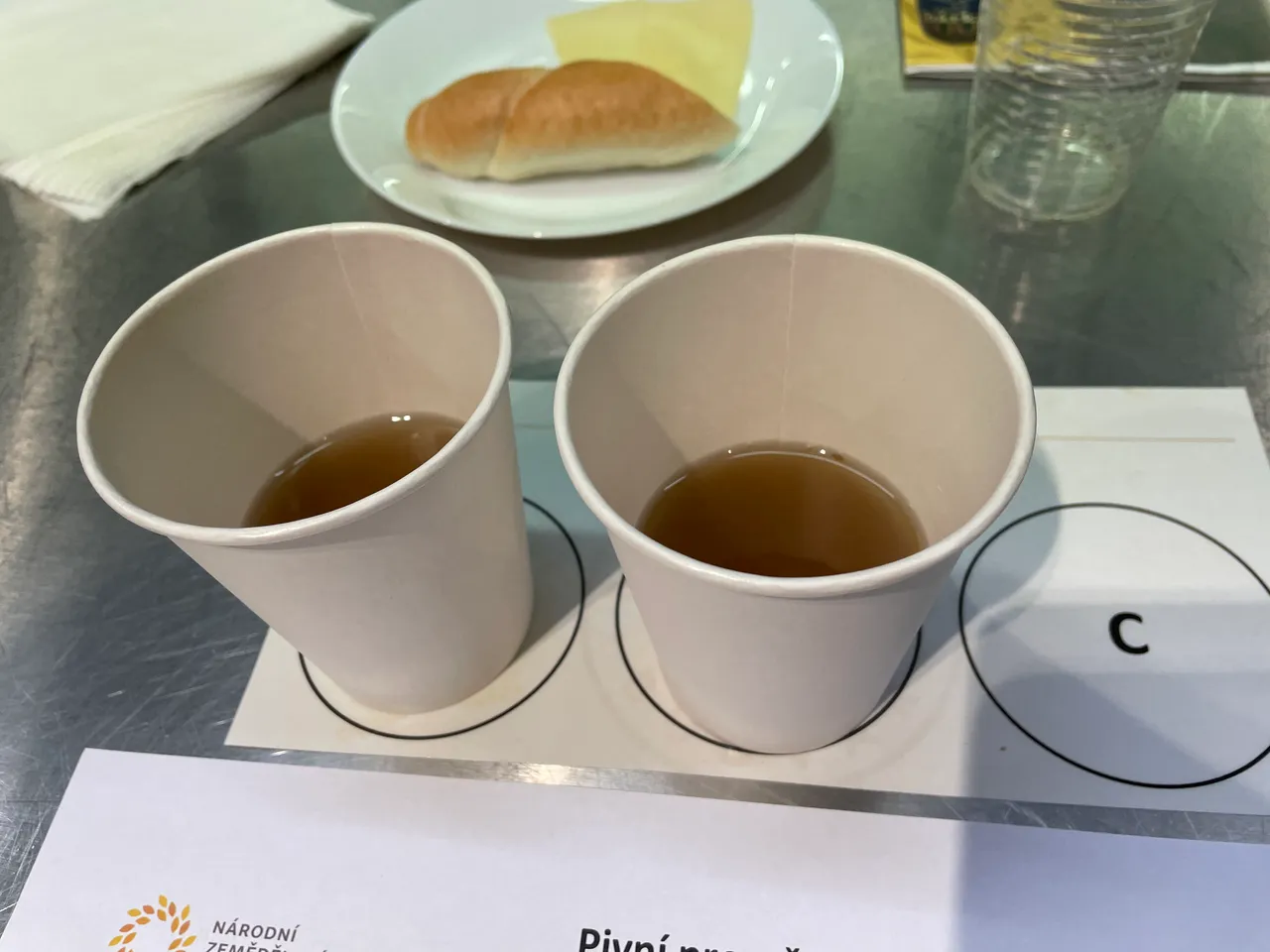
These two aren’t beer yet – they’re wort (on the left) and hopped wort.

Next came three proper brews to lift the spirits: two Bohemian lagers and a semi-dark Bavarian-style lager from Bohdaneč Brewery. The idea was to remind us how a good beer should taste in case anyone in the course lacked a basic understanding of beer. Not that anyone admitted to that, of course.
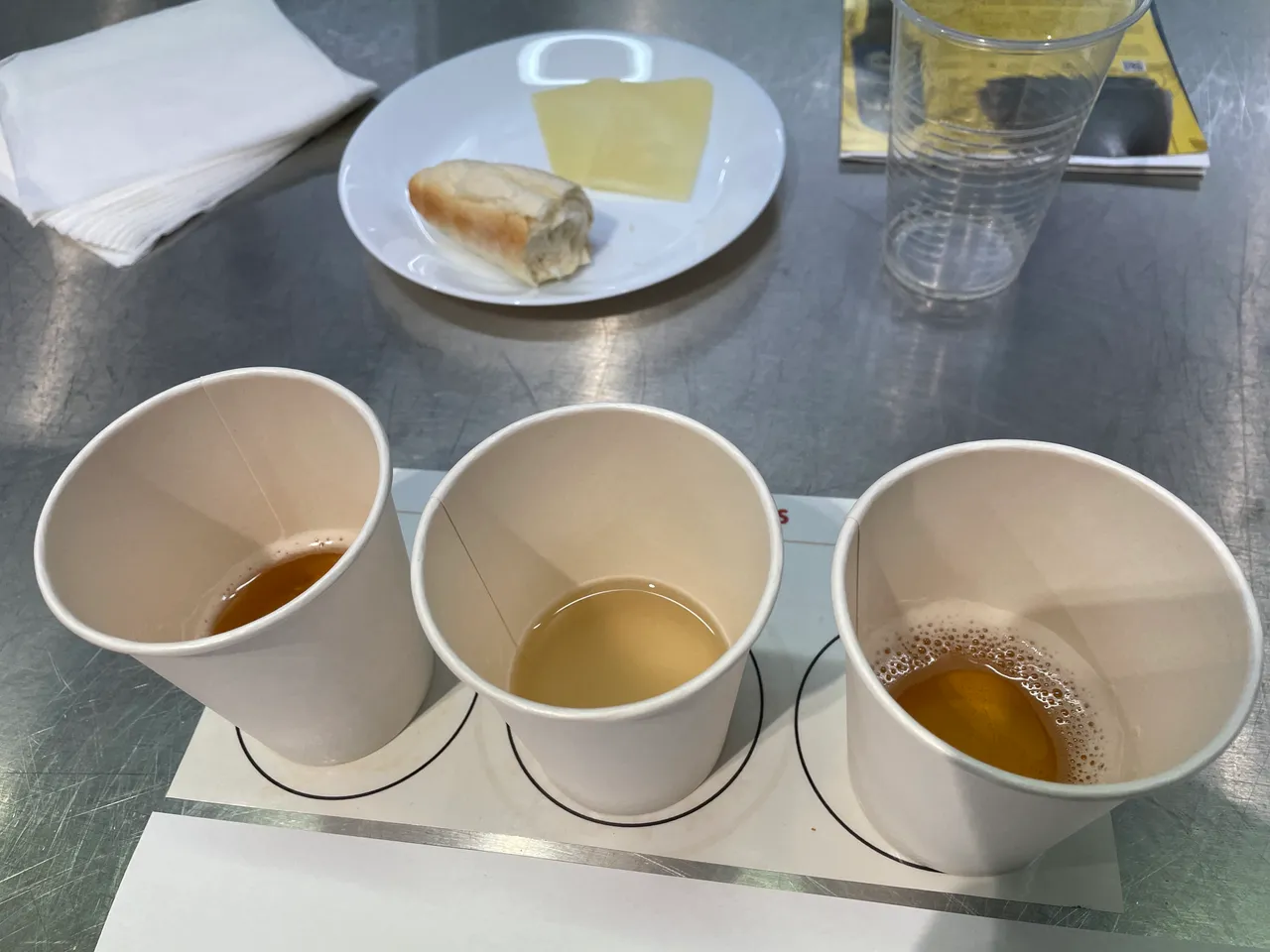
And now, for the flaws. Unlike Zlatá bárka, these industrial brews are technically beer, though I’d never recommend them to anyone. Putting their poor quality by design aside, these were intentionally mishandled to highlight the flaws. Unfortunately, you might encounter these beers in a similar state at your local supermarket or in a bar that neglects proper care of the tap and kegs.
- Storing beer at room temperature, or worse, at higher temperatures, results in a cardboard-like odor and taste. Hoppy notes tend to fade. This flaw is quite common in beers found in supermarkets – the longer they sit on the shelf, the more pronounced it becomes.
- Beer is more sensitive to light than even the palest albino, and it’s not just sunlight that’s harmful—artificial light causes damage too. Beer should never be stored in transparent containers. While the typical brown or green bottles offer better protection than clear glass, they’re still not ideal. A can or keg is the best option. The chemical reactions triggered by light give the beer an aftertaste that can only be described as a "monkey pavilion at a zoo." Sounds awful? It tastes just as bad! (the middle sample above suffered a lot of light-damage)
- Sadly, many cheap Czech beers contain Dimethyl Sulphide (DMS) as a result of improper mashing or wort boiling. It adds an unpleasant sweet corn-like taste.
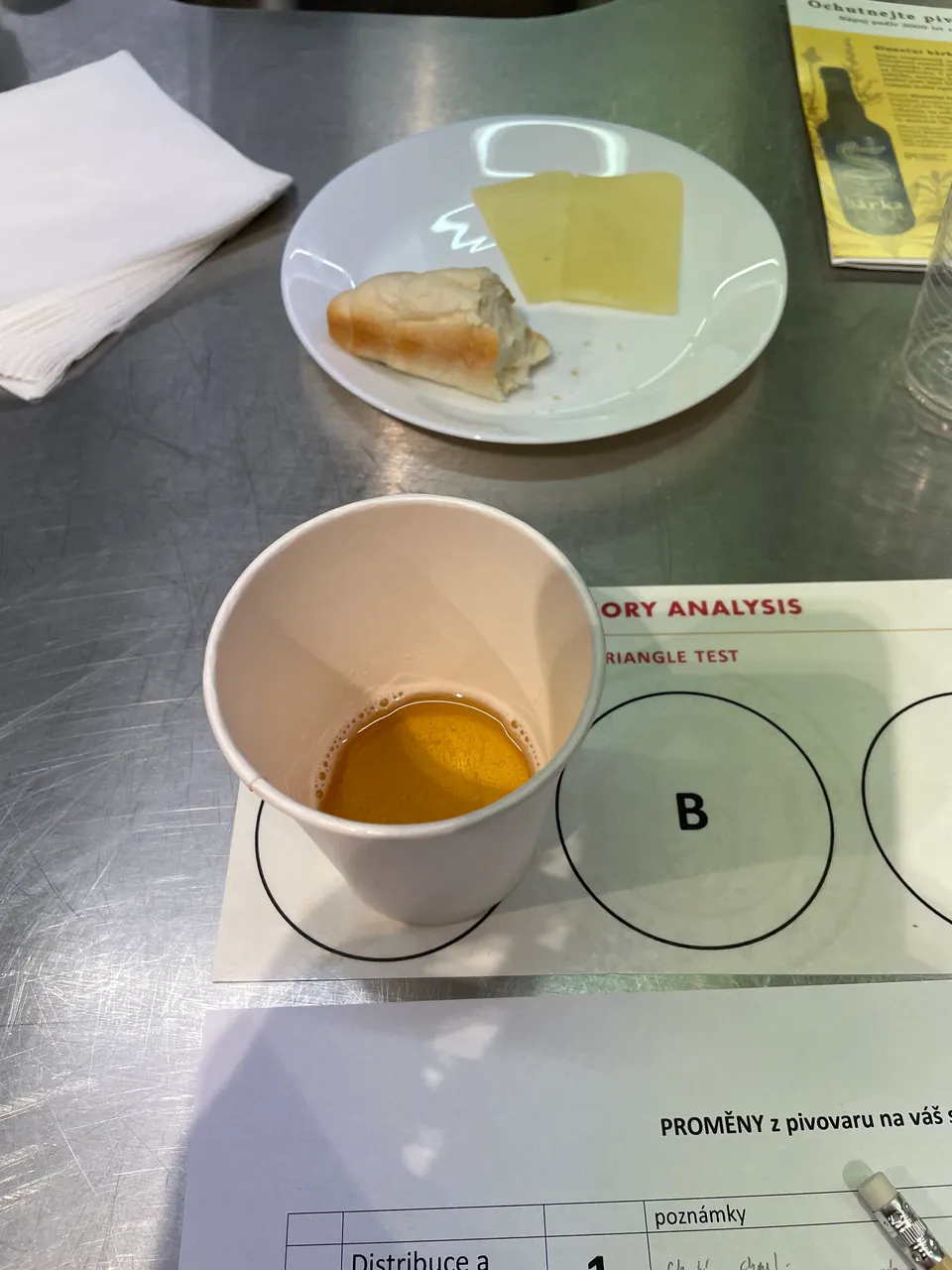
- I enjoy wheat beers and their distinct banana notes. But if that banana aroma shows up in a barley beer, it's a clear sign the fermentation went wrong. Yeast is a living organism, and it can be unpredictable. Craft breweries usually handle their whims better than large beer factories.
- Pouring is half of the final taste. Beyond the lack of skill you might notice in many bartenders, or perhaps pouring into an incorrect glass, you can tell a poor bar when your beer arrives with an unpleasant sour or vinegar-like scent. This is usually a sign that the tap and pipes haven’t been washed for a while, or that you’ve been served the first beer of the day – one that sat in the pipes overnight.
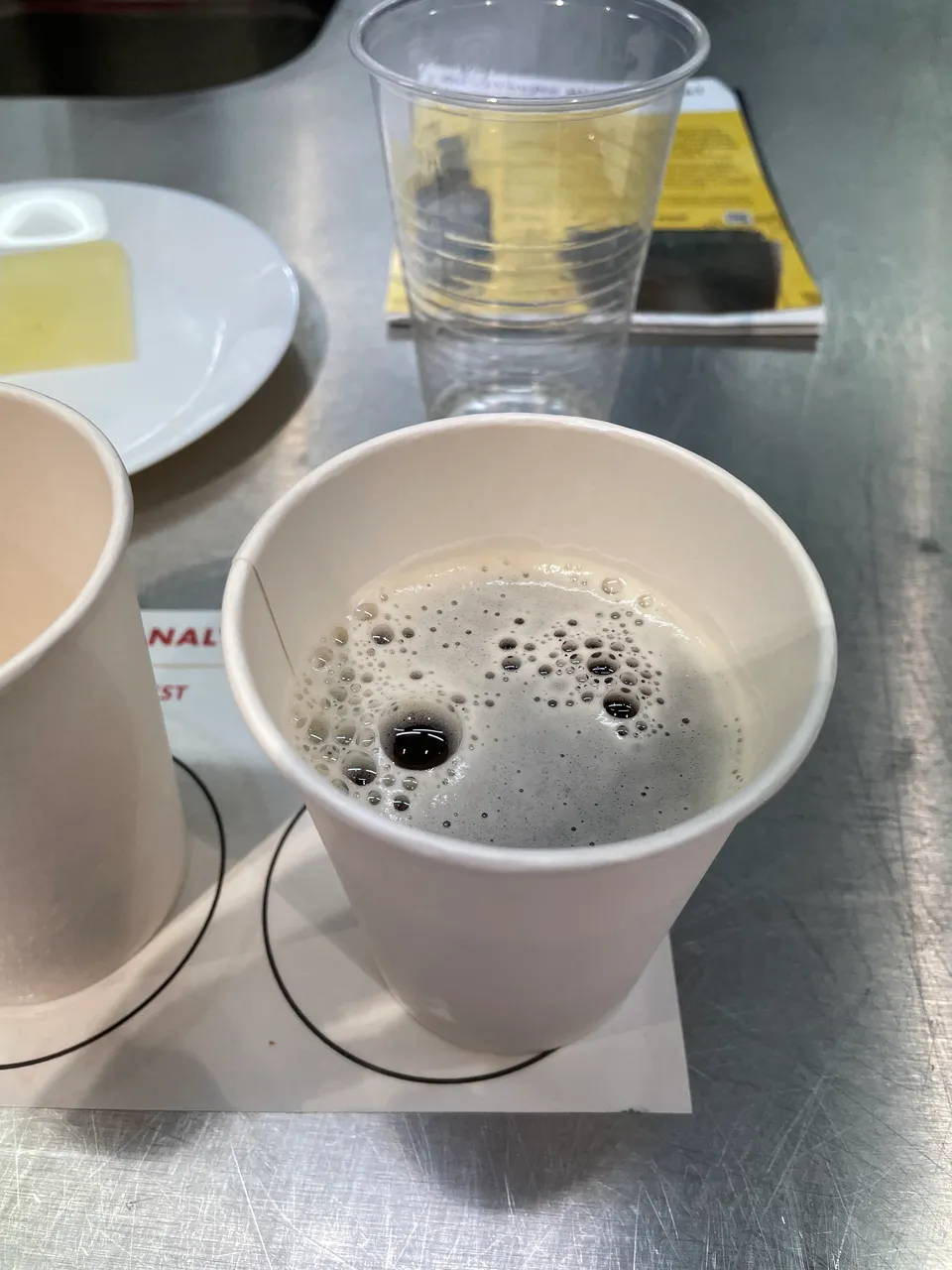
Still, the Czech Republic remains one of the best places in the world to sample great beers. Just don’t rely on the supermarkets—seek out the nearest microbrewery instead; there are hundreds to choose from. And if you’re planning a visit to Prague, feel free to reach out ;)
This is #BeerSaturday challenge post, and I would like to invite @tokenizedsociety to participate. I am sure there are Brazilian brews he would find refreshing :) Write a post in any language about beer with at least 3 pictures. It does not have to be published on Saturday. Check the rules published by @detlev ;)